MusicRadar Verdict
The B1 is a solid entry into the affordable analogue realm, proving Donner can create stellar-sounding, vintage-inspired synths.
Pros
- +
An impressive analogue replication of the 303’s sound.
- +
Saturation and delay bring the sound to life.
- +
Sequencer is easier to use, and more versatile, than many 303 clones.
Cons
- -
Visually uninspiring.
- -
It’s affordable, but not the cheapest 303 clone by some margin.
- -
Some users might prefer a more authentic 303 workflow.
MusicRadar's got your back
Donner B1 Analog Bass Sequencer: What is it?
Donner is already fairly well known in the guitar, drum and piano spheres for budget-friendly instruments. Recently, however, the Chinese brand has been moving into the production market, with some compact controller keyboards and, most interestingly of all, an analogue monosynth, the B1.
The B1 Analog Bass Sequencer – labelled Donner Syn Bass, confusingly – isn’t much to look at. Its black and grey colour scheme, rubber keyboard and calculator-like function buttons give it a look somewhere between budget MIDI controller and something you might use to process your taxes.
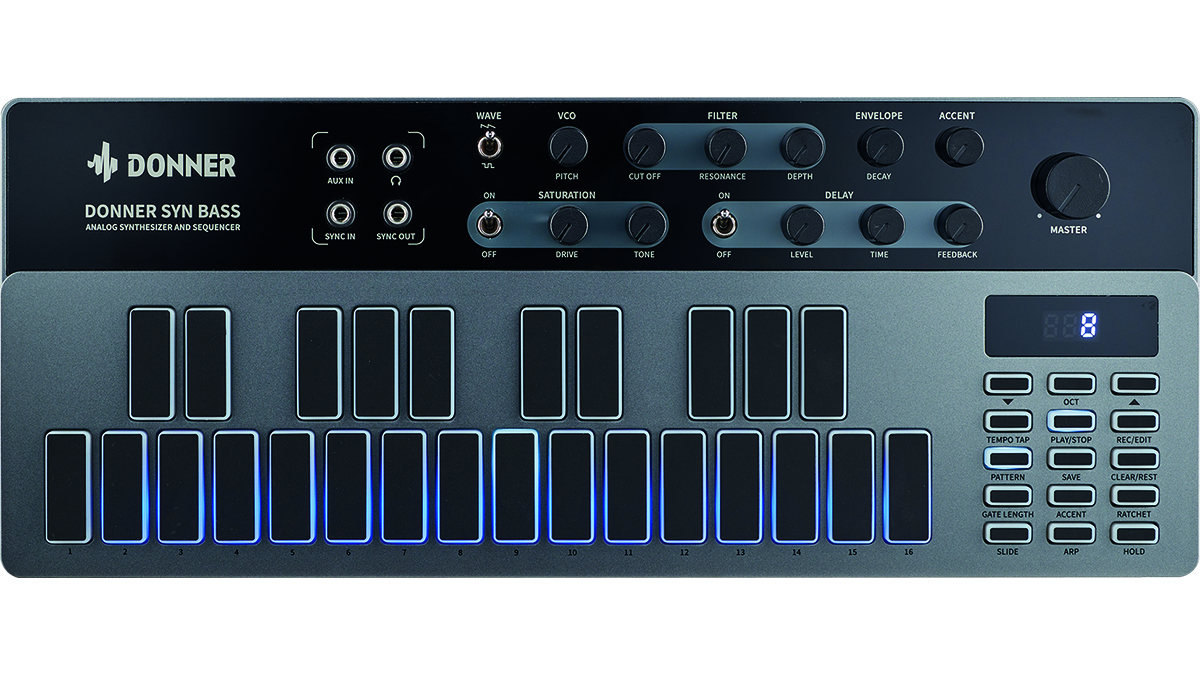
Behind the uninspiring exterior, however, lies an affordable and remarkably accurate-sounding recreation of one of the most characterful bass synths of all time – Roland’s TB-303.
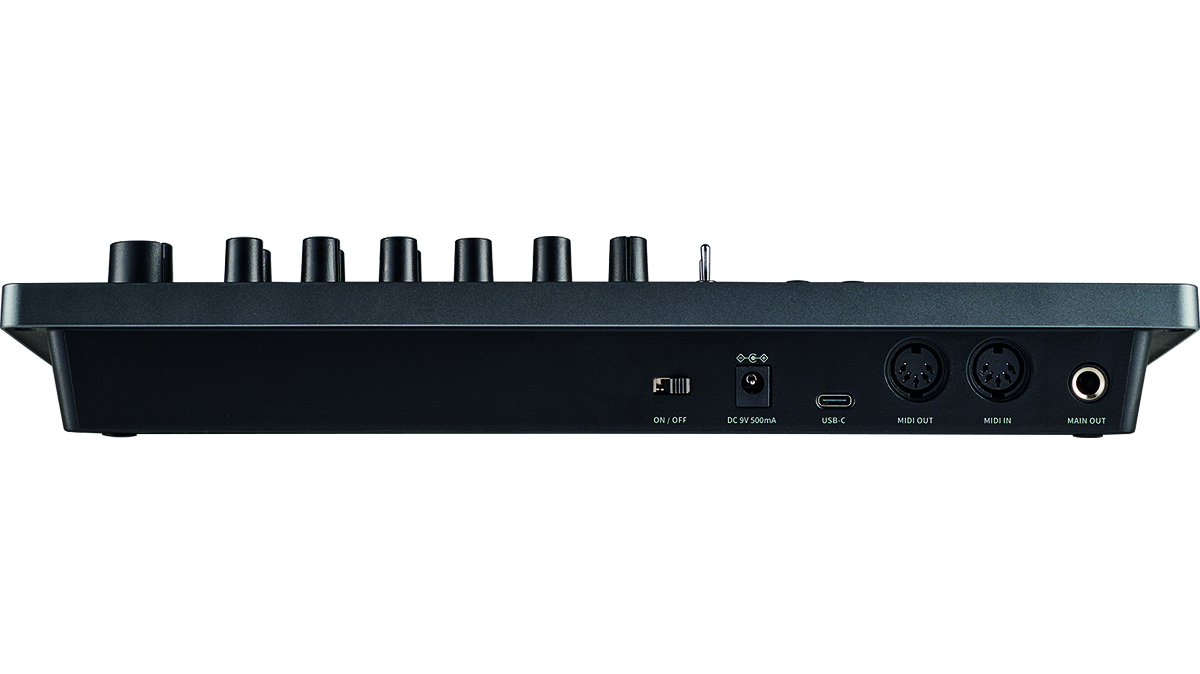
Donner B1 Analog Bass Sequencer: Performance and verdict
The core sound engine is pretty much a straight recreation of the 303. There’s a single oscillator, switchable between saw and square wave, with just a coarse tuning dial for control. This feeds into a low-pass filter with controls for Resonance, Cutoff and modulation Depth. In terms of shaping, there’s just a single Decay control that affects filter modulation, which is joined by an Accent control that adjusts the amount of filter and envelope response triggered by accented sequencer steps.
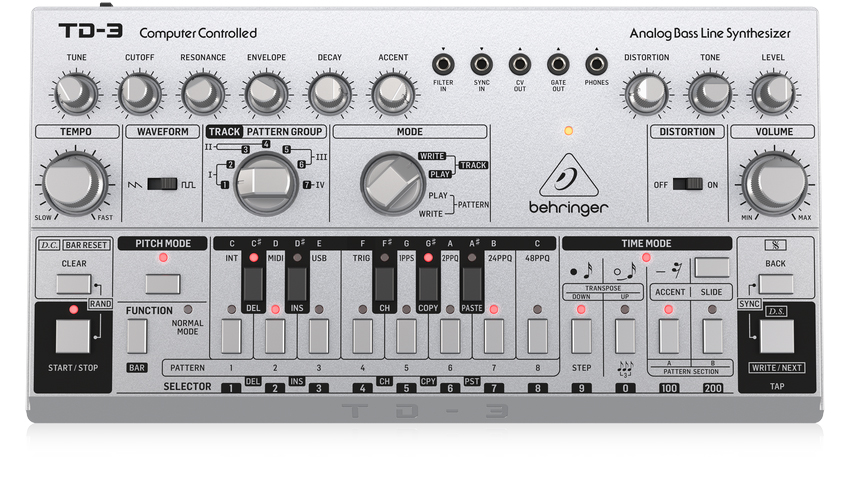
• Behringer TD-3
Behringer’s 303 clone looks and sounds just like the original, and includes many of its awkward eccentricities too.
• Korg Volca Bass
The Volca Bass isn’t a straight 303 clone, but it’s definitely influenced by Roland’s original. There’s more versatility here though, thanks to multiple oscillators.
• Roland Cloud TB-303
Roland’s official software emulation is the most authentic replication you’ll find of the 303 in the plugin realm.
It’s not much to work with, but as proved by its original inspiration, these scant parameters are perfect for shaping punchy, squelching resonant bass riffs. Donner has done a decent job of replicating the specific ways in which Roland’s bass synth responds too – the filter still lets a fair amount of mid-range content through even at its lowest cutoff setting, much like the original, and the resonance responds in a way accurate to a genuine 303.
This basic sound engine is augmented with a pair of simple built-in effects. The first of these is saturation, which is controlled via an on/off switch and dials for drive and tone. The moment you turn this on it adds an audible heft to the tone, even with the drive at its lowest point, and the tone control has a wide range that acts like a low/high-shelf EQ at the extremes. The effect brings out the raspy aggression of the filter – exactly what you want from a distorted 303.
The second effect is a simple tape delay emulation. This has an on/off switch, and controls for Level, Time and Feedback. At its fastest rate, the delay can function like a nicely uncanny reverb, which works great for adding presence to the overall sound. It’s a shame the feedback doesn’t go to extreme settings in order to create gnarly repeat builds, but the effect does a decent job in context.
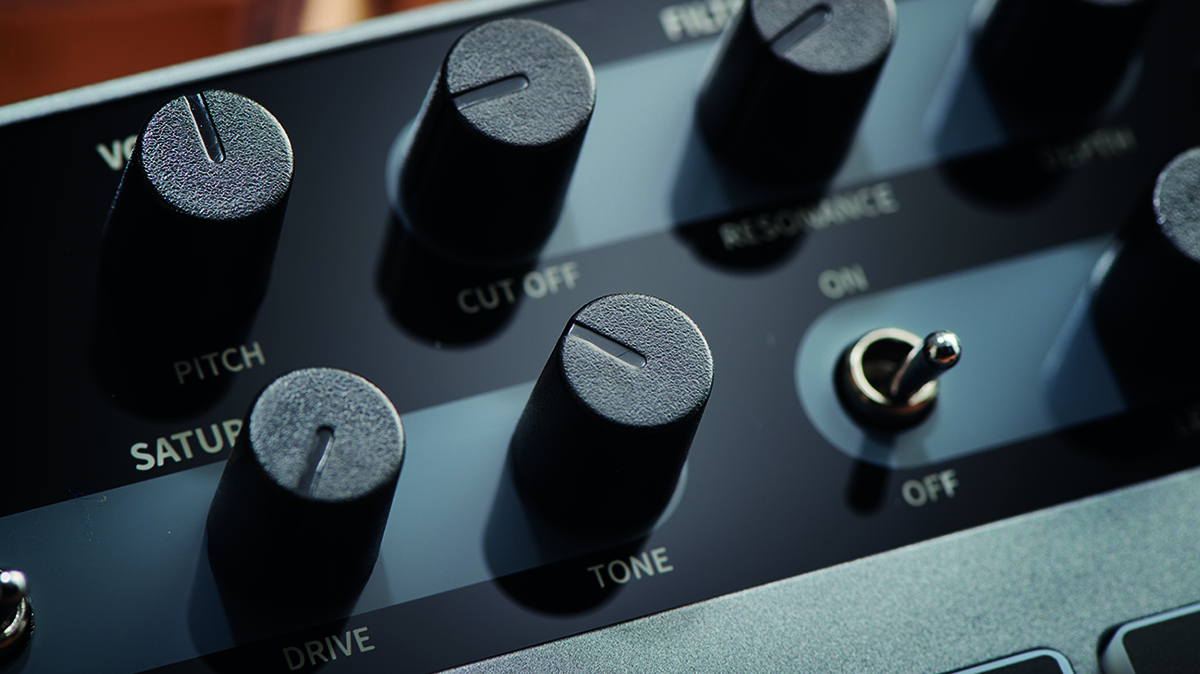
Where the B1 differs more dramatically from its inspiration is in the sequencing workflow. The original TB-303 used a small button-based sequencer with an awkward workflow that involved inputting pitch and timing – note triggers, rests, slides, accents and octave jumps – separately. This led many users of the original to rely on blind experimentation as much as careful composition when it came to programming patterns.
Donner’s take simplifies this significantly, coming with a two-octave pad keyboard, which allows the synth to be played chromatically. Sequencing is more straightforward too; steps are input one by one, allowing users to select a pitch and then input note length and assign slides or accents before moving on to the next step.
The B1 also expands on the capabilities of the original’s sequencer in a few key ways. Users can select between eight different gate lengths for each step (the top is a tied note). It allows ratchets to be programmed on each step, creating quick rolls that retrigger the note up to four times. The B1 also features a simple arpeggiator with a selection of eight pattern/range combinations.
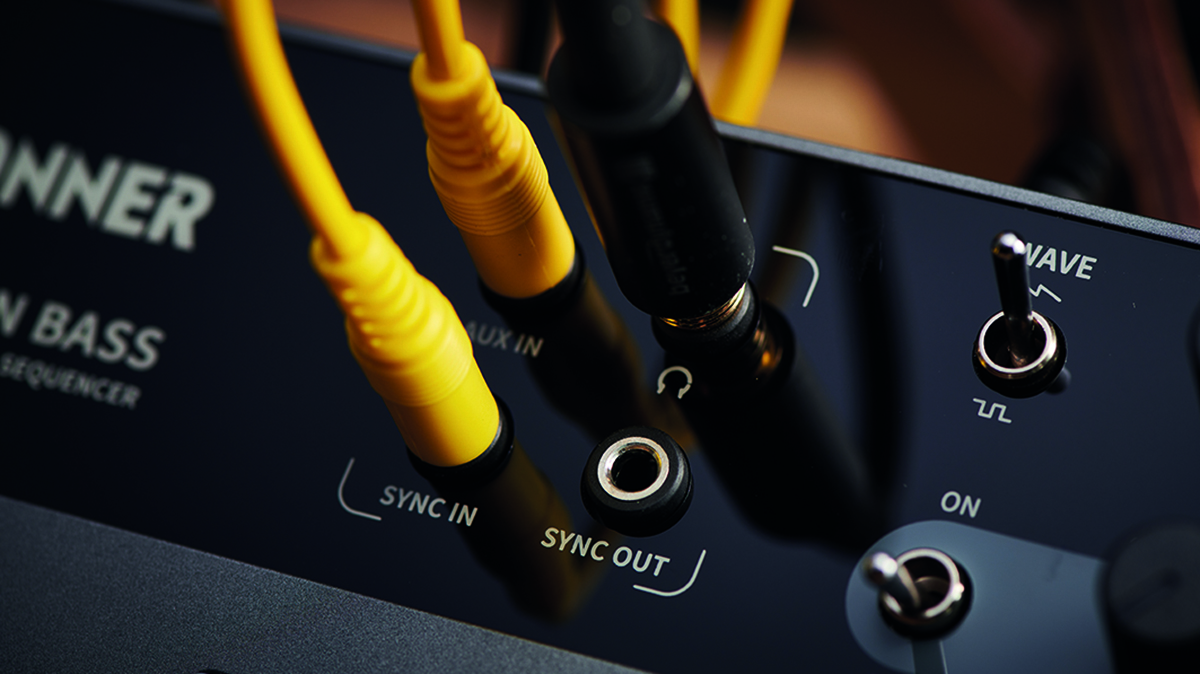
The B1 offers several other modern conveniences. Around the back the main output is joined by MIDI in and out ports, plus a USB C port for DAW control. These are accompanied on the front panel by 1/8” jack ports for analogue sync out and in, plus a separate headphone output and aux input.
There’s also a relatively basic companion app for desktop that allows for editing of sequences and firmware updates. All of which are handy, although it’s a shame there’s no CV connectivity, as present in various forms on the original and most hardware clones.
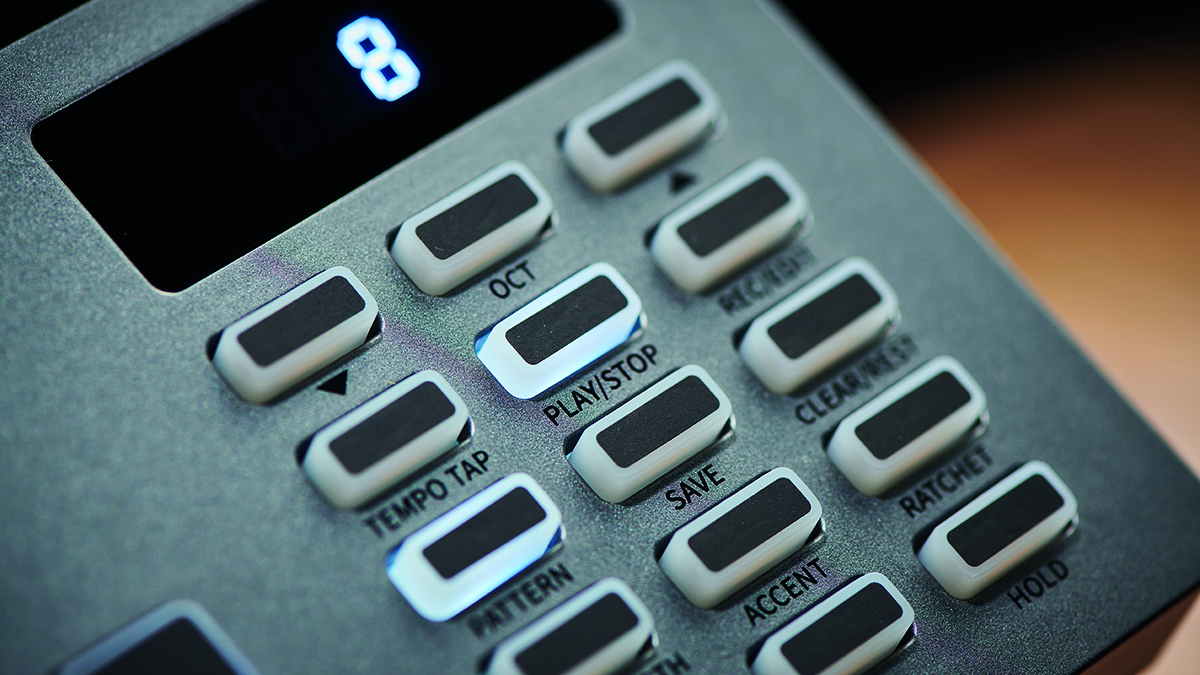
The B1 sounds on the money in replicating the 303, has some solid effects and is a very reasonable price. The elephant in the room is Behringer’s TD-3, an accurate-sounding analogue 303-clone, currently around half the price of the B1 in the UK.
Behringer’s clone certainly looks the part more, is more faithful in its sequencer design, and matches the CV outputs of the original. The B1, however, is easier to program and its additional playability and sequencing tools mean that it can do more than simply replicate straightforward acid bass riffs. Its delay is a great addition too.
That said, while the B1’s sequencing offers extra flexibility, the synth engine itself is still as bare bones as any other 303-alike, and without features like a full amp envelope, additional oscillator or variations in filter mode, the sonic range is effectively limited to a single – albeit very desirable – style.
MusicRadar verdict: The B1 is a solid entry into the affordable analogue realm, proving Donner can create stellar-sounding, vintage-inspired synths.
Donner B1 Analog Bass Sequencer: Hands-on demos
MusicRadar
Donner Music
MALO BEATS
Captain Pikant
Floyd Steinberg
Donner B1 Analog Bass Sequencer: Specifications
- KEY FEATURES: Analogue monosynth based on the design of the Roland TB-303. Includes saturation and delay effects. 26-note pad keyboard. Sequencer with 128-slot pattern memory. Arpeggiator.
- CONTACT: Donner
I'm the Managing Editor of Music Technology at MusicRadar and former Editor-in-Chief of Future Music, Computer Music and Electronic Musician. I've been messing around with music tech in various forms for over two decades. I've also spent the last 10 years forgetting how to play guitar. Find me in the chillout room at raves complaining that it's past my bedtime.
“We’re still avoiding him to this day... we would just despise him after a while”: Flaming Lips' Wayne Coyne is not a Billy Corgan fan
“KIKI BOY 2025”: Frank Ocean appears to be teasing something... or other
“This is great. I knew I was getting to them! I’m so happy. It’s such a good feeling”: Spotify bites back at Kate Nash










